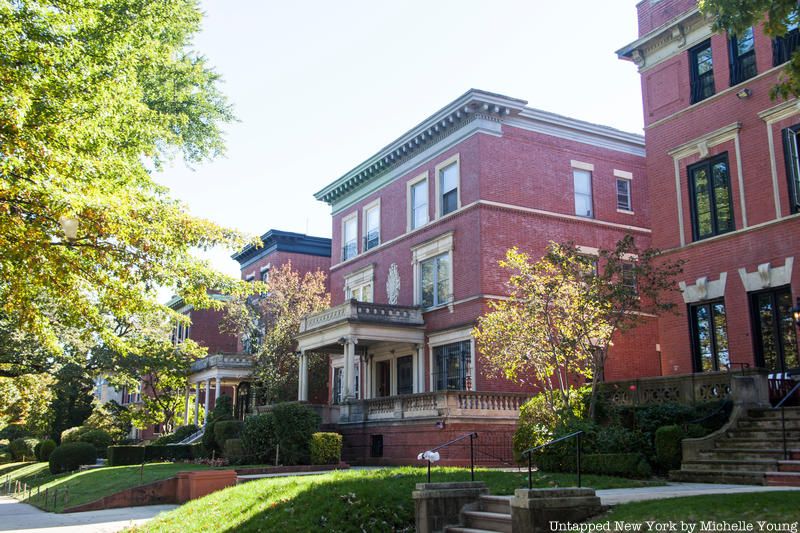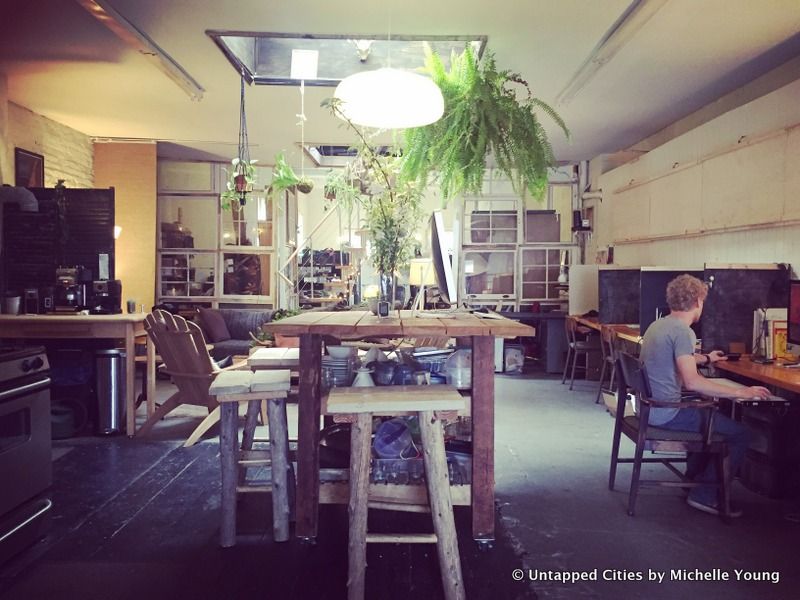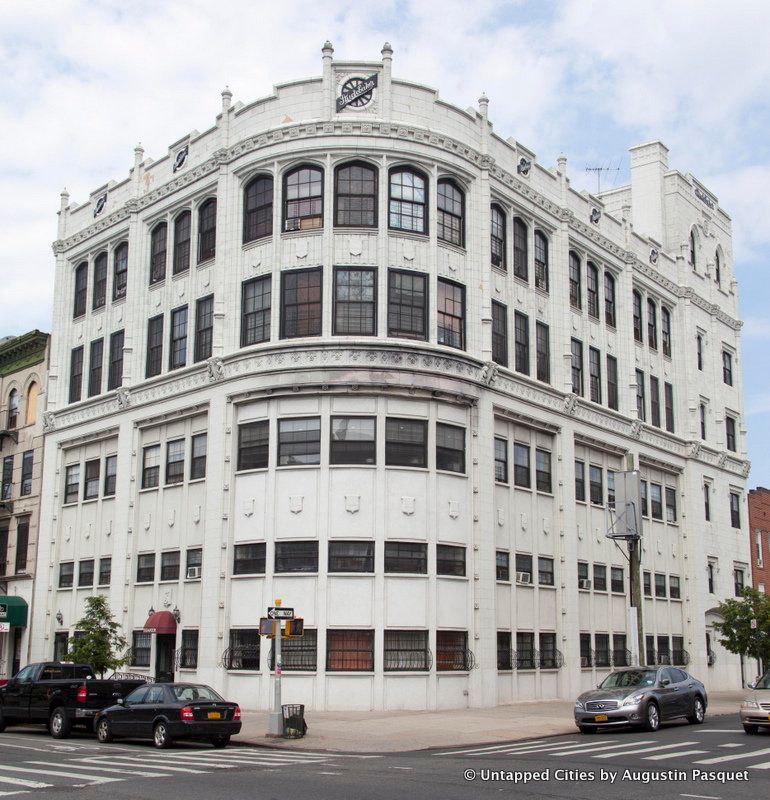NYC’s Forgotten ‘War on Christmas Trees’
Discover how an obscure holiday crackdown affects festive street vendors today!


Crown Heights is a neighborhood in Brooklyn we have a very special attachment to here at Untapped New York. Our office has been here for many years and several on our team live here. It’s a neighborhood that has a lot to offer: historic districts with rows of brownstones, newer developments, a hip dining and bar scene along Franklin Avenue, industrial spaces to work from, proximity to Prospect Park, and a diverse community that has traditionally been a mix of Caribbean and Jewish.
It is also a neighborhood that continues to navigate development forces often beyond its control. But despite the increase in real estate values over the last five years, many new locally owned businesses have sprung up including bars, restaurants, retail stores, dessert shops, while many practical small businesses have also stayed put.
We’re excited to release our guide to Crown Height’s hidden gems, revealing locations in the neighborhood physically out of sight, off-the-beaten path or unsung — all which are worth a visit.

Just next door to the popular beer hall Berg’n in Crown Heights, cheese is aging dozens of feet underground inside 1850s-era beer tunnels under the former Nassau Brewery. Opened in 2014, Crown Finish Caves is a licensed New York State dairy plant aging cheeses from places near and far. There are cheeses from the Hudson Valley, Vermont, Maine, Wisconsin, even Italy. Crown Finish Caves ages the cheeses using the process of affinage. Crown Finish Caves is open to the public for regularly scheduled Cave Music evenings, a bi-monthly pop-up shop, and you can join a cheese CSA (we’re members and it’s a real treat). See photographs of the cheese aging in action here.

Weeksville Heritage Center is one of the Crown Heights’ great historical hidden gems. Behind a modern facade and visitor center on the street lies a bucolic and peaceful green space with a row of historic homes known as the Hunterfly Road Houses. Weeksville was founded in 1838 when an African-American longshoreman named James Weeks bought this plot of land in present-day Crown Heights, eleven years after New York State abolished slavery.
Dating back to about 1830, the four historic houses are all individual New York City landmarks and the only surviving structures that remain from a larger development. They sit along the former Hunterfly Road, which may have followed an old Indian trail all the way out to Jamaica Bay until it was closed off sometime in the later 19th century. Equally importantly, it is believed that Weeksville held an important role along the Underground Railroad. Get more information about the Weeksville Heritage Center here.

While there are numerous single family homes scattered throughout the northern section of Crown Heights above Eastern Parkway, the predominant housing type remains the brownstone townhouse. But a two block stretch on President Street between New York Avenue and Kingston Avenue south of Eastern Parkway is lined with impressive mansions, one after another. These free standing homes are predominantly owned by the Hasidic Jewish community of the Chabad-Lubavitch, whose headquarters are close by. In her book Holy Days author Lis Harris documents a Hasidic family who lives on President Street in 1980s Crown Heights.
The mansions are set back from the street and have sizable front lawns. They are of many different types of architectural traditions, though many fall on the neoclassical, Greek Revival or Victorian end. At 1353 President Street is the organization FREE (Friends of Refugees of Eastern Europe) founded in 1969 by Rabbi Menachem M. Schneerson to support the Jewish refugees fleeing the former Soviet Union. The day after the week of Sukkhot finished this year, a large gathering was taking place at FREE that spilled out onto the lawn.

In a former garage is Nowhere Studios, a great community of creators who share a co-working space built from scratch by journalist and photographer, Porter and Sarah Fox. It’s so visually pleasing, it appeared in an episode of High Maintenance, featuring a freelance photographer! Hanging plants, reclaimed wood galore, windows salvaged from upstate, a rooftop, and a stellar resident cat, Mr. Miyagi, make for a fabulous working spot for freelancers and small teams. Untapped New York worked out of Nowhere Studios for about a year, and we loved it! You can even still spot the remnants of a piece of street art by Swoon out front — the owners know the artist.

By the early 1900s, Brooklyn was bustling and its wealthy residents were participating with equal fervor in the automobile craze as their Manhattan counterparts. Much of the automobile industry was clustered in Crown Heights. Although there remains a clustering of auto repair shops in Crown Heights, it is far from how Brooklyn’s Automobile Row felt in its heyday, when the major automobile brands – Ford, Chrysler, Buick, General Motors, Pontiac – were sold in dealerships and showrooms along Bedford Avenue, with service centers and garages rounding out the auto-related offerings.
Notable spots south of Eastern Parkway include the Firestone service station on Empire Boulevard, with a fantastic Art Deco-era overhang, and the Simons Motor Sales Co. repair shop at 1590 Bedford Avenue across from the Bedford-Union Armory. But the Studebaker Building on Bedford and Sterling is the gem of Automobile Row. The landmarked building was built in a neo-Gothic style out of concrete and brick, with a white terra cotta facade. Along the parapets at the top of the building you can still find the wheel logo of the Studebaker company. The front facade, which once had large windows to showcase cars, has been altered significantly and the building was converted into apartments for low-income, disabled and homeless families. Another Studebaker Building is the converted 1000 Dean (where the Untapped New York office is now) and if you enter the main lobby and head towards the back entrance of Berg’n, you’ll see the remnants of a rotary car turntable that once operated.

In the midst of the street grid in Crown Heights is an odd diagonal midblock street known as Clove Road. Located behind an A&P supermarket, it’s so forgotten the Google Street View car didn’t even bother to turn down it until the year 2019. Yet, it may have one of the richest and longest histories of any street in the neighborhood.
Clove Road is what remains of a Native American trail and later Colonial era road and it retains some of its old Belgian blocks to boot. (Belgian block, rectangular pieces of granite that came from ship ballast, is commonly miswritten as cobblestone but the two are actually different.) Architect Michael Cetera, who has studied Clove Road in depth, says it was also an important location in the American Revolutionary War and was one of the first roads in Brooklyn to be paved. It was also possibly a portion of, or nearby, the Bedford Pass, which allowed passage through a ridge that is today’s Eastern Parkway. American troops used this pass to retreat back to Brooklyn Heights during the Battle of Brooklyn.

Mid-block on Bergen Street between Troy and Schenectady avenues is the FDNY Rescue 2 firehouse, a curious holdout on a block that is along the northern edge of St. John’s Park and the back athletic facilities of a charter school. Rescue 2 was the first rescue unit chartered by the FDNY outside of Manhattan, following the a submarine fire at the Brooklyn Navy Yard. The firemen who work in rescue units are the cream of the crop and this unit specifically was involved in responding to the 1960 Park Slope plane crash, 9/11, and the 1993 World Trade Center bombing. Rescue 2 has been at the 1472 Bergen Street location since 1985.
Soon the 1893 building will become a decommissioned firehouse when Rescue 2 moves to a new firehouse designed by Studio Gang that is nearing completion on the border of Crown Heights and Brownsville. The new design won the Award for Excellence in Design in 2015 from the Public Design Commission, New York, 2015. The Bergen Street firehouse is owned by the city and we are told by someone familiar with the FDNY that is “kicking around a few ideas at the moment” about what to do with the structure after.

What was once the illustrious home of the Brooklyn Dodgers is now a hulking 24-story housing project. Its name, Ebbets Field Apartments, is one of the few reminders of its baseball history. Tragically, a sign reads “No ball playing.” Behind a bush, under the building’s address number is a cornerstone inscribed with the words “This is the former site of Ebbets Field.” The year 1962 is shown inside a baseball to mark the year the apartments were constructed. In a parking lot within the complex just off of Sullivan Place, a forgotten plaque on the sidewalk marks the original location of the Ebbets Field home plate.

This particular building in Crown Heights, Brooklyn, home to the Chabad-Lubavitch Orthodox Jewish spiritual center, is handsome no doubt, but it’s major secret is that it has doubles in more than a dozen places around the world. Located at 770 Eastern Parkway, it’s an example of a building that holds such a strong symbolic hold that the followers of this religious group have replicated it as they’ve spread. The original building is the de facto headquarters for the Lubavitch and was once the workplace of Grand Rebbe Menachem Mendel Schneerson. While none of the replicas are 100% exactly alike, certain key architectural elements tie them together: the three-part facade, the gabled roofs and central bay window.

The archives of the Brooklyn Academy of Music (BAM) is located inside an office at 1000 Dean, where 3,000 linear square feet of items from 1857 to the present day are organized and catalogued. More than a collection of playbills and posters, the archive aims to also capture the “communities—civic and artistic—that built the institution…[and the] history of performing arts in the US, and Brooklyn’s social history.” The archives can be visited by appointment or during Open House New York weekend.
Stay tuned for our next guide to the hidden gems of New York City!
Subscribe to our newsletter